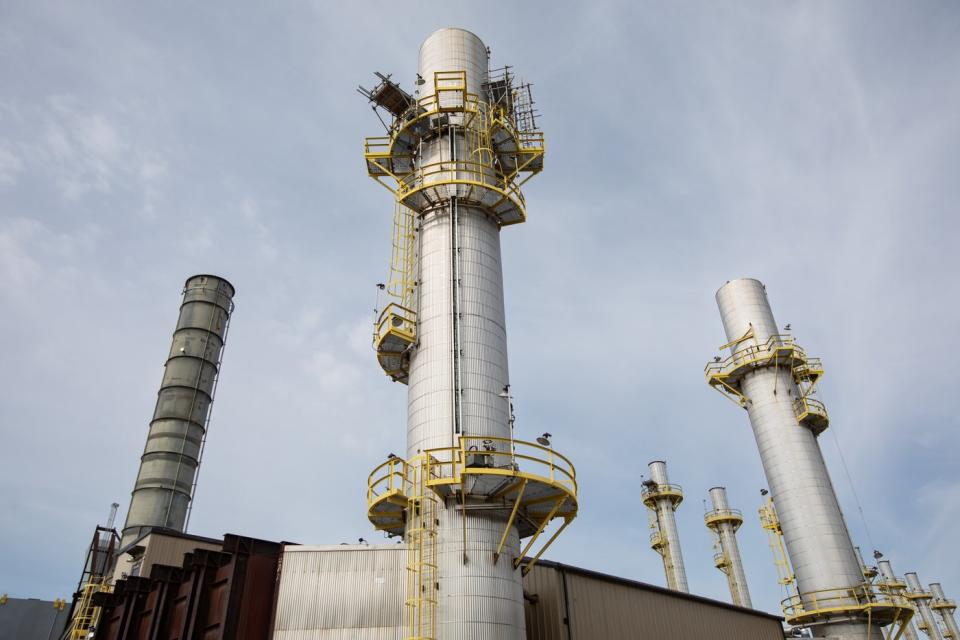Alberta regulator projects 17 per cent growth in oilsands production by 2033

CALGARY — The regulator responsible for overseeing Alberta's oil and gas sector has released a new report projecting the province's oilsands production will grow by more than 17 per cent by 2033.
In the latest version of its annual forecast, released Monday, the Alberta Energy Regulator predicts production of raw bitumen — the thick, sticky oil found in Alberta's oilsands region — will grow to four million barrels per day in 2033, up from the 3.4 million barrels per day that was produced last year.
Most of the growth is expected to come not from oilsands mines, but from in situ operations, which use steam to loosen up the oil deep below the surface of the earth.
The report paints a picture of a future in which the oilsands remains the No. 1 driver of Alberta's energy sector, in spite of what the AER says are increased growth opportunities for alternative forms of energy like hydrogen, geothermal, helium and lithium.
"In our opinion, the conventional forms of energy — I'm talking about oil, gas, bitumen — should continue and will be part of the energy mix during the energy transition," said AER chief economist Afshin Honarvar, on a webcast held to discuss the report.
In 2023, oilsands bitumen accounted for 66 per cent of Canada’s total oil equivalent production, according to AER figures.
But the sector is under increasing scrutiny for its emissions-heavy production methods. The oil and gas sector is already Canada's heaviest-emitting industry, and rising oilsands production over the past decade has meant total emissions from the sector are increasing — at a time when many other sectors of the economy are successfully reducing overall emissions.
The federal government has proposed mandating a ceiling on oil and gas emissions in order to help slow climate change. The rules would require the industry to cut greenhouse gas emissions by 35 to 38 per cent from 2019 levels by 2030.
Alberta's formal position is that an emissions cap would be akin to a production cap, restricting growth and investment in the province's energy sector.
But the AER believes the oilsands can grow while simultaneously reducing its emissions, if it deploys carbon capture and storage technology.
A consortium of oilsands companies, called the Pathways Alliance, has expressed interest in building a massive carbon capture and storage network in northern Alberta to reduce emissions from oilsands production sites, but has not made a final investment decision.
"When it comes to carbon capture, utilization and storage, we think that it's a very practical, feasible technology that can be utilized by industry in order to achieve their operational goals, as well as achieving their net-zero carbon neutrality goals," Honarvar said.
A recent report by Deloitte took the opposite tack, concluding oilsands companies forced to cut emissions in the face of a federally mandated cap would choose to reduce production rather than invest in too-expensive carbon capture and storage technology.
The AER also predicts global oil prices will continue to rise, from a projected average of US$76 per barrel for U.S. benchmark West Texas Intermediate for the current year to US$83.63 by 2033.
Various forecasters have different views about the long-term outlook for oil and oil prices.
The International Energy Agency predicts oil demand to continue to grow until 2030, but has suggested global production increases will lead to a supply glut before the end of the decade, potentially taking a bite out of oil prices.
Goldman Sachs has said it believes oil demand won't peak until 2034, and even then will "plateau" for a number of years rather than sharply decline.
The Canada Energy Regulator has laid out different scenarios in which the future demand for oil varies widely, depending on whether or not Canada and the rest of the globe achieve their climate commitments.
This report by The Canadian Press was first published June 24, 2024.
Amanda Stephenson, The Canadian Press

 Yahoo Finance
Yahoo Finance 